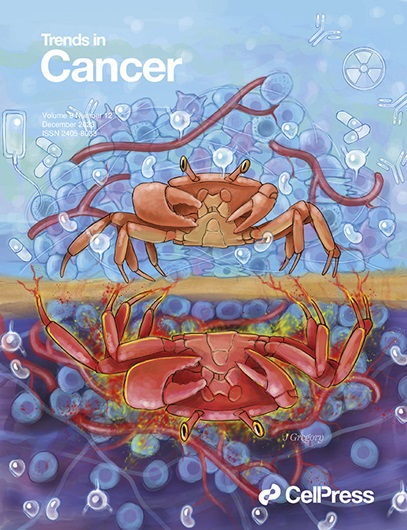愈合时间:抑制纤维化可预防胶质母细胞瘤复发。
IF 14.3
1区 医学
Q1 ONCOLOGY
引用次数: 0
摘要
Watson等人的新发现表明,治疗诱导的炎症和纤维化会加剧胶质母细胞瘤的复发。治疗后的纤维化龛使存活的肿瘤细胞免受免疫监视,支持其持续处于休眠状态,并使其反弹生长。及时抑制炎症和瘢痕可减轻复发,鼓励在胶质母细胞瘤治疗中使用新的组合方法。本文章由计算机程序翻译,如有差异,请以英文原文为准。
Time to heal: inhibiting fibrosis prevents glioblastoma recurrence.
New findings by Watson et al. demonstrate that therapy-induced inflammation and fibrosis potentiate glioblastoma recurrence. Post-treatment fibrotic niches shielded surviving tumor cells from immune surveillance, supported their persistence in a dormant state, and enabled rebound growth. Timely inhibition of inflammation and scarring attenuated recurrence, encouraging the use of new combinatorial approaches in glioblastoma therapy.
求助全文
通过发布文献求助,成功后即可免费获取论文全文。
去求助
来源期刊

Trends in cancer
Medicine-Oncology
CiteScore
28.50
自引率
0.50%
发文量
138
期刊介绍:
Trends in Cancer, a part of the Trends review journals, delivers concise and engaging expert commentary on key research topics and cutting-edge advances in cancer discovery and medicine.
Trends in Cancer serves as a unique platform for multidisciplinary information, fostering discussion and education for scientists, clinicians, policy makers, and patients & advocates.Covering various aspects, it presents opportunities, challenges, and impacts of basic, translational, and clinical findings, industry R&D, technology, innovation, ethics, and cancer policy and funding in an authoritative yet reader-friendly format.
 求助内容:
求助内容: 应助结果提醒方式:
应助结果提醒方式:


